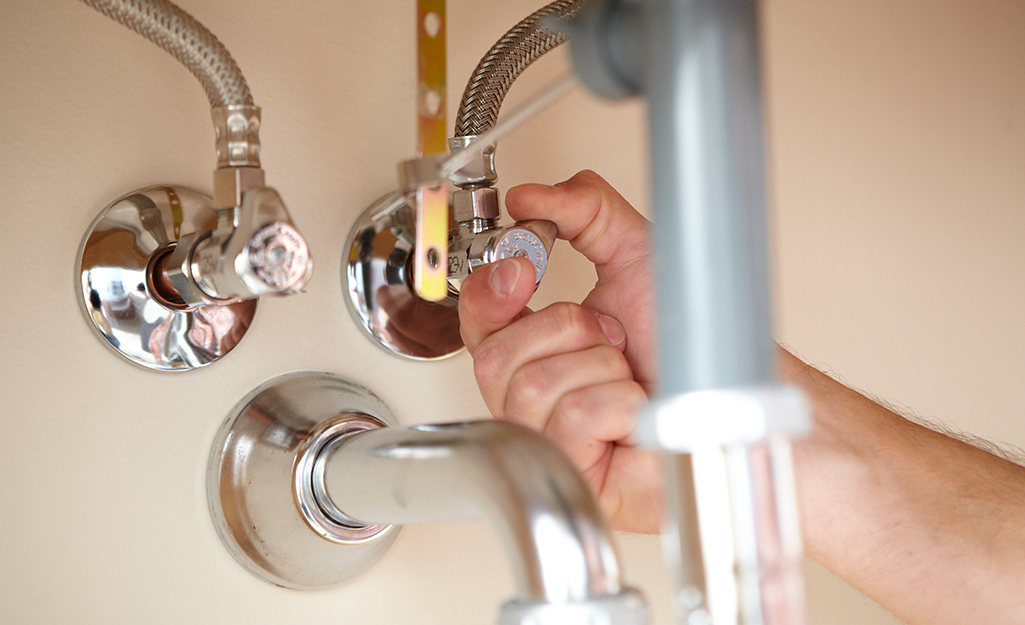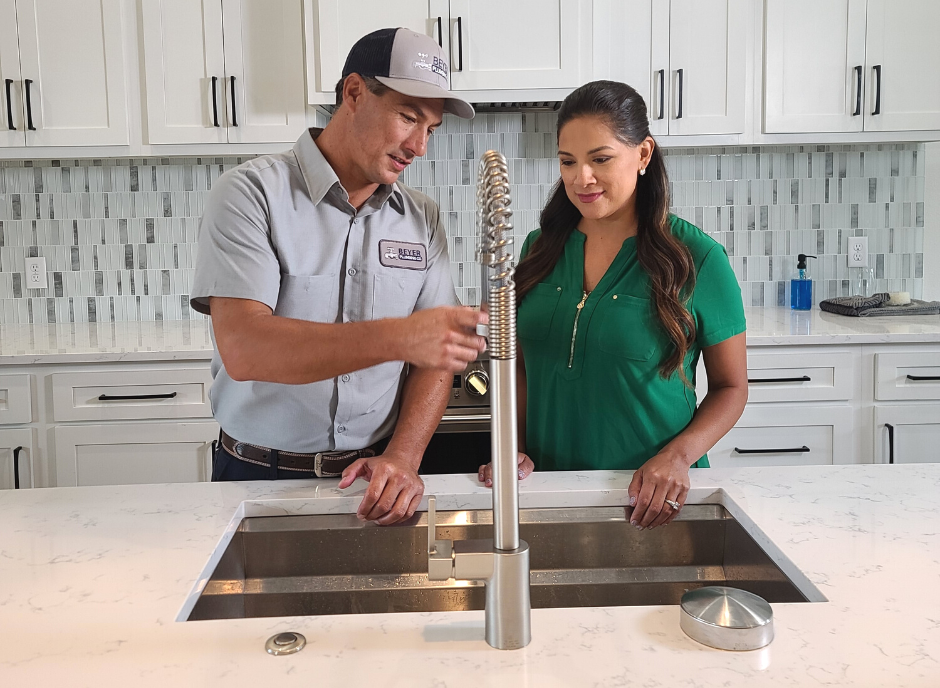Why It's Required to Resolve a Broken Faucet
Why It's Required to Resolve a Broken Faucet
Blog Article
They are making a few great pointers about Why Is It Important To Fix Your Leaking Tap/Faucet? as a whole in the content directly below.

Trickling taps could look like a minor hassle, yet their impact goes beyond just the inconvenience of the noise. From wasting water to sustaining unnecessary monetary costs and wellness threats, ignoring a leaking tap can cause different repercussions. In this article, we'll delve into why it's essential to address this usual household problem immediately and successfully.
Wastage of Water
Environmental Effect
Dripping faucets contribute dramatically to water wastage. According to the Epa (EPA), a single tap dripping at one drip per second can throw away greater than 3,000 gallons of water annually. This not just stress water resources but also affects communities and wildlife based on them.
Step-by-Step Overview to Taking Care Of a Dripping Tap
Devices Required
Before attempting to repair a trickling tap, gather the necessary devices, including an adjustable wrench, screwdrivers, replacement components (such as washing machines or cartridges), and plumber's tape.
Common Faucet Issues and Their Solutions
Recognize the sort of faucet and the specific issue creating the drip. Common issues include worn-out washing machines, corroded valve seats, or defective O-rings. Refer to maker guidelines or on the internet tutorials for detailed advice on repairs.
Financial Prices
Boosted Water Expenses
Past the ecological impact, trickling faucets can blow up water expenses considerably. The built up waste with time equates into greater energy expenditures, which could have been stayed clear of with prompt repair services.
Potential Home Damage
Moreover, prolonged trickling can result in damage to fixtures and surface areas surrounding the tap. Water build-up can create staining, rust, and also structural problems if left unattended, leading to extra repair work costs.
Health Worries
Mold and Mildew Growth
The constant existence of dampness from a leaking faucet creates a perfect setting for mold and mildew development. These fungi not only jeopardize interior air top quality but also position health and wellness risks, especially for people with respiratory problems or allergies.
Waterborne Conditions
Stationary water in dripping taps can end up being a breeding place for microorganisms and other virus, raising the threat of waterborne illness. Contaminants such as Legionella microorganisms prosper in stagnant water, possibly bring about severe diseases when consumed or breathed in.
DIY vs. Specialist Fixing
Pros and Cons of DIY Repair Service
While some may try to fix a leaking tap themselves, do it yourself repair work include their own collection of challenges. Without appropriate expertise and tools, do it yourself attempts can exacerbate the problem or cause insufficient repair services, extending the problem.
Benefits of Employing a Professional Plumber
Employing a specialist plumber makes certain that the underlying source of the trickling tap is addressed efficiently. Plumbers possess the know-how and tools to detect and fix tap concerns effectively, saving time and minimizing the threat of more damages.
Environmental Obligation
Individual Payment to Conservation
Taking responsibility for fixing dripping faucets straightens with broader initiatives toward water conservation and ecological sustainability. Every individual's actions jointly make a considerable impact on maintaining valuable resources.
Lasting Living Practices
By prioritizing punctual fixings and taking on water-saving practices, people add to sustainable living techniques that benefit both present and future generations.
Safety nets
Normal Maintenance Tips
To prevent leaking faucets, execute regular maintenance such as cleaning aerators, checking for leakages, and changing worn-out parts without delay. In addition, take into consideration installing water-saving devices or updating to more reliable components.
Significance of Prompt Repairs
Dealing with dripping faucets as quickly as they're observed stops additional water wastage and possible damages, inevitably conserving both water and money in the future.
Effect On Residential Or Commercial Property Value
Assumption of Well-Maintained Home
Preserving a building in good condition, including attending to maintenance issues like trickling faucets, boosts its perceived value and value amongst potential customers or tenants.
Influence on Resale Value
Features with properly maintained plumbing fixtures, consisting of faucets, command higher resale values in the realty market. Addressing dripping taps can add to a positive impression throughout residential or commercial property evaluations and negotiations.
Final thought
Addressing a trickling tap exceeds mere convenience; it's an essential step towards preserving water, decreasing monetary expenses, and securing health and wellness and residential property. Whether through DIY fixings or expert assistance, acting to deal with leaking faucets is a small yet impactful means to promote responsible stewardship of sources and contribute to a much healthier, extra lasting future.
Most Common Reasons for a Leaky Faucet and How to Stop the Drip
Whether it’s your kitchen faucet leaking or a bathroom faucet leaking, one leaky faucet can waste anywhere from three to 30 gallons of water every single day. If the constant drip-drip-drip doesn’t get your attention, your water bill will. The good news is that, by following a few simple steps, chances are pretty good you can fix the problem yourself.
Why is it dripping?
Before you start taking things apart, let’s break down some of the most common causes of a leaky faucet.
Bad O-ring.
A cartridge is a valve that controls the flow of water into the faucet spout. On cartridge faucets there’s an O-ring—the little disc attached to the stem screw that holds the faucet handle in place. If it’s loose or worn-out, it can cause your sink handle to leak. Of course, the cartridge itself could be worn out. If that’s the case, make sure you replace it with the exact same kind.
Corroded valve seat.
The valve seat connects the faucet and the spout. If the leak seems to be coming from the spout, it might be because a buildup of water sediment has corroded the valve seat.
Worn-out washers or seals.
A leaky spout could be caused by a bad washer that rests against the valve seat. It’s just a matter of time before friction takes its toll. It could also be the wrong size washer or one that’s been installed incorrectly. Water sediments can also corrode inlet and outlet seals.
Water pressure.
If the faucet only drips now and then, or when you turn the handles a certain way, you should probably check your home’s water pressure.
Loose or broken parts.
The adjusting ring and packing nuts in the stream screw can become loose over time, causing your sink handle to leak. Try tightening or replacing the packing nut. If the leak is coming from the pipes underneath the sink, you probably have a broken pipe or fitting. If that’s the case, you should definitely call a plumber.
Know your faucet.
Faucets come in a variety of types. Each one has its own assembly—and its own possible causes of leaks. Learning about the four most common kinds of faucets will help you know how to take them apart and make any repairs.
How to stop a leaky faucet
Fixing that leaky faucet doesn’t have to take a lot of time, money, or expertise. It’s usually a simple matter of replacing a worn-out washer or gasket, a loose O ring, or another part. Chances are really good you can do this yourself if you follow these simple steps.
Shut off the water.
Before you tackle the faucet, cut off the water supply to the sink. There should be one valve for hot and one for cold. Hand-turn them clockwise with your hands till they close. If there are no valves under the sink, head to the basement and shut off the main water supply to the house. Then turn on the faucet until it empties out the water that’s still in the line and you’re ready to start. It’s a good idea to cover the sink drain with a plug or a rag so you don’t lose any small pieces and parts while you’re working.

I ran across that content about Water Dripping from Faucet: Why and How to Fix while browsing the web. Sharing is nice. You won't know, you might be helping someone out. Thanks a bunch for being here. Come back soon.
Report this page